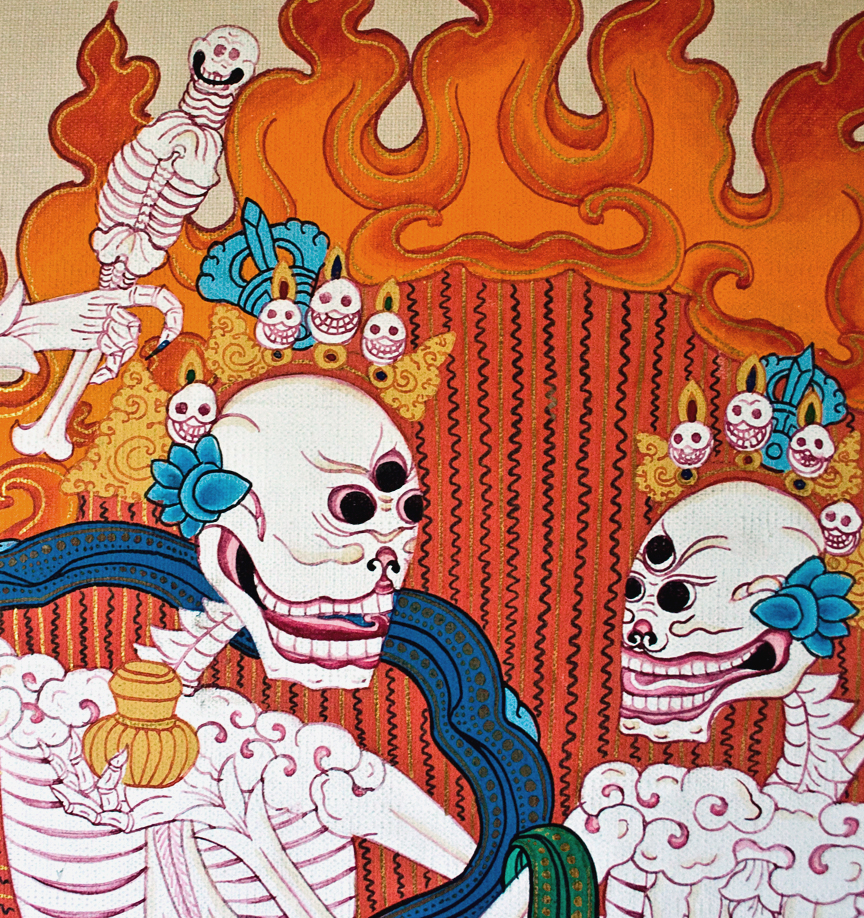Citipati (“two skeletons – charnel lords)
In Tibetan Buddhism, the Citipati, a pair of intertwined, ecstatically dancing, male and female skeletons, are ascetics who were so lost in meditation that they they were robbed and beheaded by a thief without ever coming out of their trance.
Their symbol is meant to represent both the eternal dance of death as well as perfect awareness and they are invoked as ‘wrathful deities,’ benevolent protectors; fierce beings of demonic appearance.
The dance of the Citipati is commemorated twice annually in Tibet with ritual dances.
I was gifted with this beautiful, hand painted thangka, sewn into a traditional, brocade standard, given to me by my then boss at the metaphysical book store I worked at from 2002 to 2007 (I know – crazy, right?). I love it and am eternally grateful.
Thank you, Jill: namaste.
I don’t mean to be irreverent (oh, who am I kidding?) but it seems to me they might have had longer lives of devotion had they not been so busy navel gazing that they didn’t even notice their peril.


My website might interest you. Just finishing two weeks in Amdo at various cham dances – lots of Citipati and Gangre and even a few Ging! And of course the retinue of masked dancers and Black Hats. Enjoy the site. Demo.
Nice! Thanks for visiting.
CITTIPATI or the KINKARA are representations of the great Tantric Deities Lord Heruka and the Goddess Vajrayogini in Union (Charkasambara) . They are extremely Holy protector Deities. Kinkara are special Dharma Protectors for practitioners of Heruka and Vajrayogini. They are emanations of Heruka and Vajrayogini who emanate as skeletons. This appearance, devoid of flesh symbolizes that enlightened beings are completely free from self-cherishing. (They were NEVER sentient beings , “navel gazing” or beheaded in a trance!) For correct uncontaminated Dharma teachings in an unbroken lineage go to: http://www.tharpa.com
You were given a great gift.
I know it was a great gift – I love it! – Thank you. Of course, I consulted a Nepalese book of Buddhism and Hinduism before I wrote my post so, like most things of a religious nature, I guess this particular symbol/icon has more than one story/origin. Interesting to read your interpretation, however – thank you!